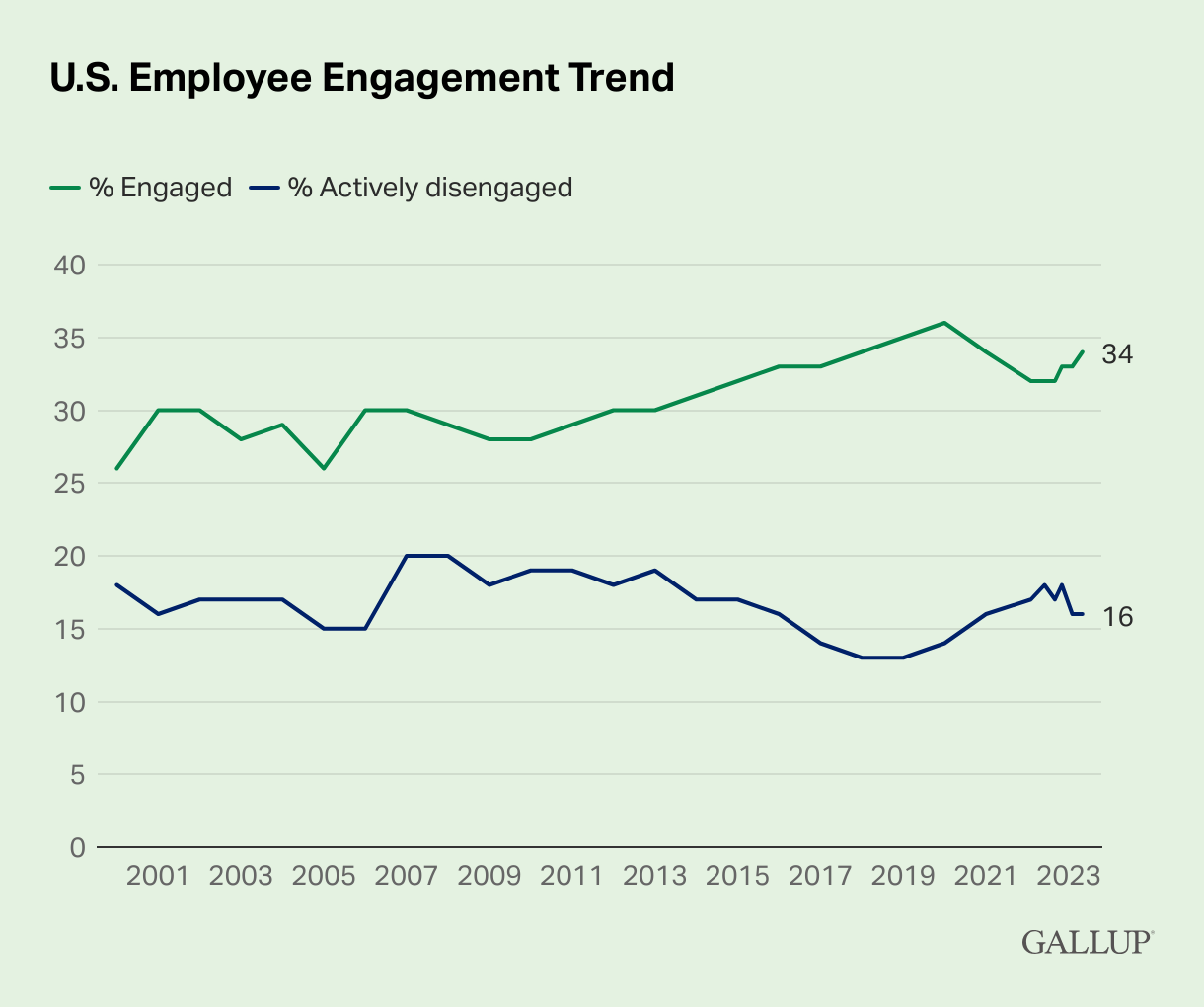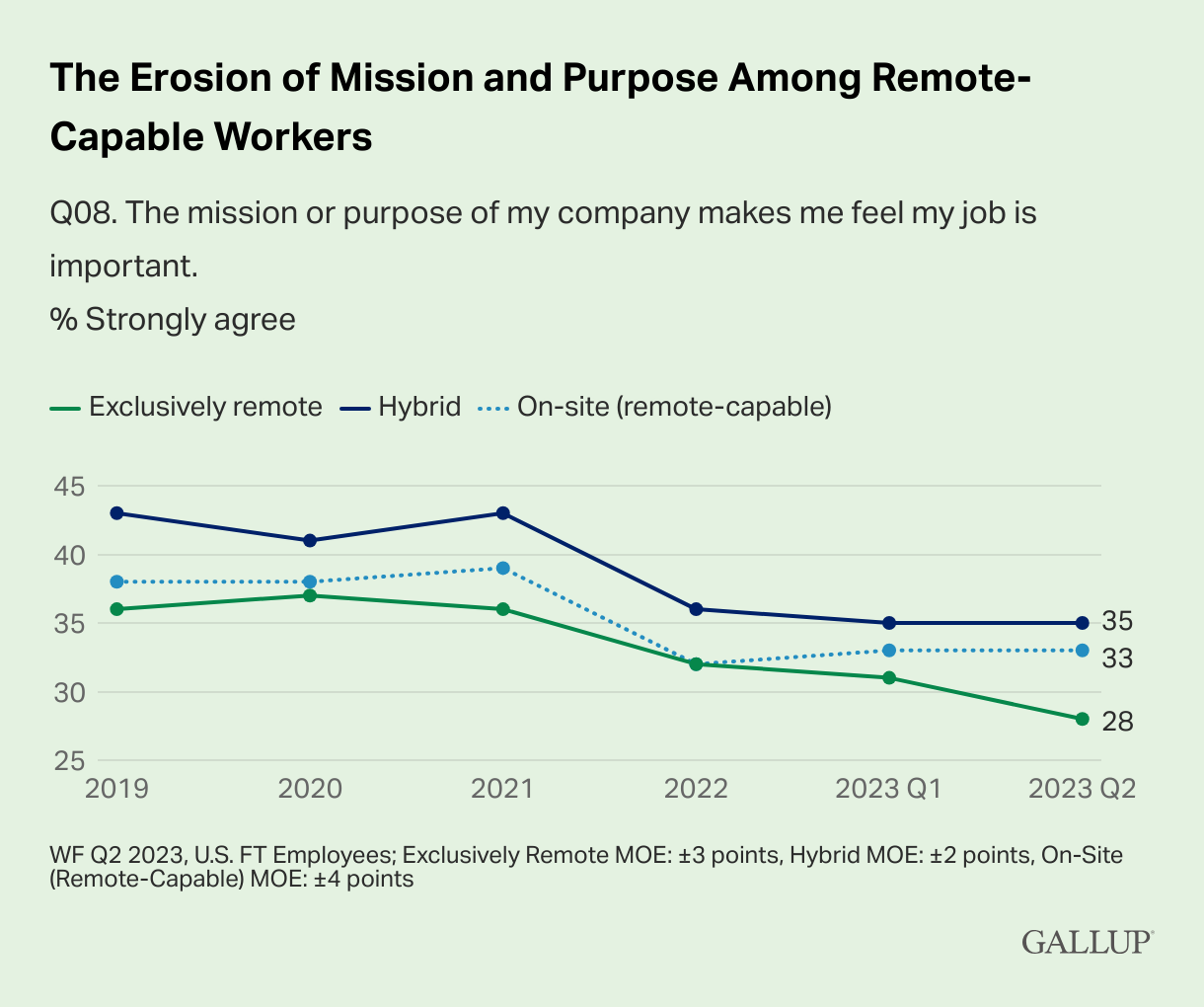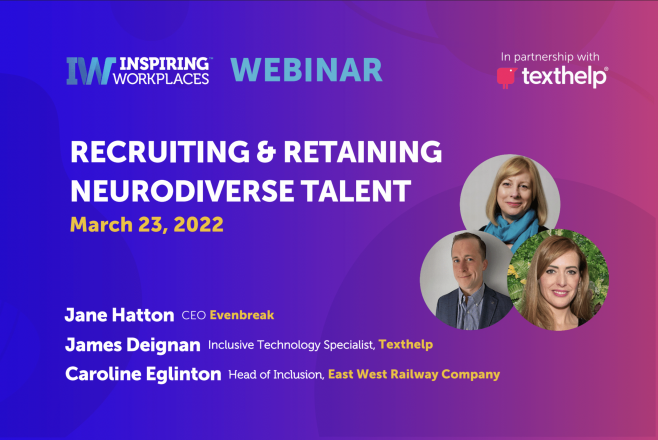
30th August 2023
Bridge or Gap? Exploring the Relationship Between Remote Workers and Organizations

The engagement of US employees is improving slightly, with 34% being engaged at work in mid-2023, up from 32% in 2022; however, the connection between remote employees and their organization’s mission and purpose is deteriorating, which could lead to potential implications for retention, productivity, and quality of work. Managers are advised to have meaningful weekly conversations to bridge this gap and enhance employee engagement.
From the original article written by Jim Harter and published by Gallup:
- 34% of U.S. employees are engaged at work, up from 32% in 2022
- Remote employees’ connection to their organization’s purpose is declining
- Managers must use meaningful interactions to build engagement
U.S. employee engagement presents a mixed picture in the emerging hybrid and remote workplace. Engagement overall is ticking back up, but with a red flag: Remote workers’ connection to the mission and purpose of their organizations has deteriorated to a record low.
The percentage of engaged employees in the U.S. in mid-year 2023 is now 34%, up two percentage points from 2022. The increase comes after a decade of growth, peaking at 40% in late June to early July of 2020 with an annual peak of 36% that same year, followed by two years of decline, dropping to 32% in 2022.
The percentage of actively disengaged employees has declined from 18% in 2022 to 16% at mid-year in 2023.
The ratio of engaged to actively disengaged workers in the U.S. is 2.1-to-1, up from 1.8-to-1 in 2022. The record high is a ratio of 2.7-to-1 recorded in 2019.

Which engagement elements have organizations improved on the most?
While the overall trend in engagement is on a slow incline in 2023, the elements that have improved the most are those that are most basic and foundational:
- knowing what’s expected of me at work (6-percentage-point increase from 2022)
- having the materials and equipment to do my work right (4-point increase from 2022)
- having the opportunity to do what I do best every day (4-point increase from 2022)
All of the above high-growth areas still lag behind pre-pandemic levels.
Improvements in engagement have been among on-site employees
While less engaged overall (30%), on-site employees have improved the most since 2022. Yet employees who are hybrid (38%) and exclusively remote (38%) have not improved overall. Across all work locations, clarity of expectations is on the rise in 2023.
The Mission and Purpose Decline
The most worrying finding in the latest survey — especially in a workplace that is increasingly hybrid and remote — is that employees who can do their work remotely have an eroding connection to the mission or purpose of the organization. The drop is more pronounced recently for exclusively remote employees — 28% strongly agree they feel connected to their organization’s mission and purpose, tying the record low for this group from 2011.

Measuring Employee Engagement Quarterly
To gather these findings, Gallup measures employee engagement by asking random samples of the working population about specific workplace elements that link to many organizational outcomes, including profitability, productivity, customer service, retention, safety and overall wellbeing. Gallup conducts quarterly surveys of the working population — random samples of approximately 15,000 U.S. full- and part-time employees.
The most worrying finding in the latest survey — especially in a workplace that is increasingly hybrid and remote — is that employees who can do their work remotely have an eroding connection to the mission or purpose of the organization.
The survey measures several workplace elements, including employees’ level of agreement about clarity of expectations, opportunities for development, their opinions counting, and connection to the mission or purpose of the organization. In short, engaged employees are involved in and enthusiastic about their work and workplace. Actively disengaged employees are disgruntled and disloyal because most of their workplace needs are unmet.
More Equipped to Do Their Work, but Less Loyal
It is encouraging that, as U.S. workers are settling into new ways of working, they report improvements on the basic elements of employee engagement — clearer expectations, access to materials and equipment, and opportunities to do what they do best. These improvements have contributed to a slight rebound in engagement in 2023. Still, employee engagement lags behind pre-pandemic levels.
But even as employees are more equipped to do their work, the relationship between employee and employer is less bound together by a common mission and purpose. This means many employees’ relationships with their employers are becoming increasingly “gig-like” and less loyal — which has possible implications on customer and employee retention, productivity, and quality of work.
Do you know an inspiring leader? Nominate them today: Inspiring Leaders Awards 2024.
Are you an inspiring workplace? Then register for the Inspiring Workplaces Awards 2024.
Join our community here, for free and access The Inspire Hub Forum to connect directly with your peers who share the same purpose.





